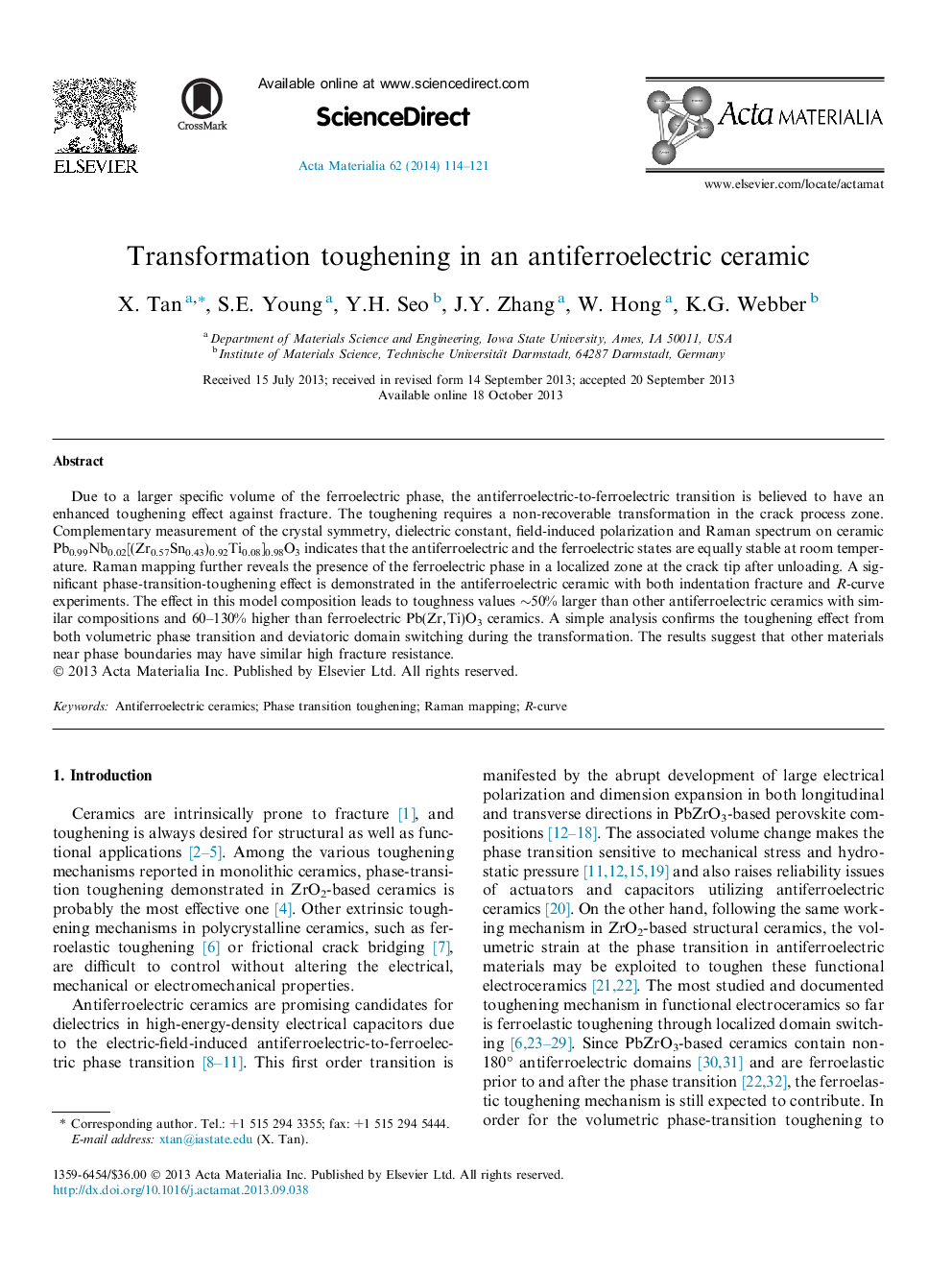| Article ID | Journal | Published Year | Pages | File Type |
|---|---|---|---|---|
| 1445966 | Acta Materialia | 2014 | 8 Pages |
Due to a larger specific volume of the ferroelectric phase, the antiferroelectric-to-ferroelectric transition is believed to have an enhanced toughening effect against fracture. The toughening requires a non-recoverable transformation in the crack process zone. Complementary measurement of the crystal symmetry, dielectric constant, field-induced polarization and Raman spectrum on ceramic Pb0.99Nb0.02[(Zr0.57Sn0.43)0.92Ti0.08]0.98O3 indicates that the antiferroelectric and the ferroelectric states are equally stable at room temperature. Raman mapping further reveals the presence of the ferroelectric phase in a localized zone at the crack tip after unloading. A significant phase-transition-toughening effect is demonstrated in the antiferroelectric ceramic with both indentation fracture and R-curve experiments. The effect in this model composition leads to toughness values ∼50% larger than other antiferroelectric ceramics with similar compositions and 60–130% higher than ferroelectric Pb(Zr, Ti)O3 ceramics. A simple analysis confirms the toughening effect from both volumetric phase transition and deviatoric domain switching during the transformation. The results suggest that other materials near phase boundaries may have similar high fracture resistance.
